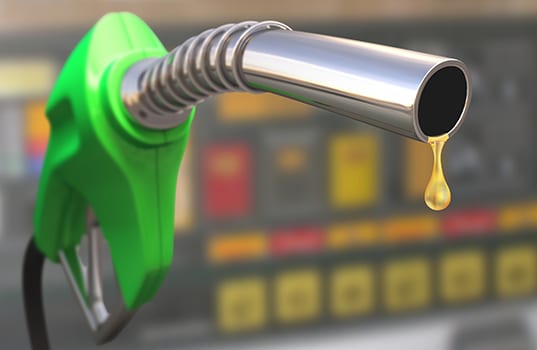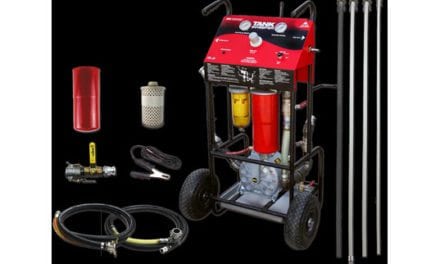“Fueled for Thought,” By Joe O’Brien, Source North America
When it comes to gasoline formulations, octane is only part of the story. Although there are standards for gasoline specifications that provide a measure of universality, finished motor gasoline that is sold as regular, mid-grade or premium is still subject to quite a bit of variation. The final formulation of these fuels is heavily influenced by the season, a region’s environmental regulations, and the cost and availability of blending components. With that in mind, here are some of the frequently asked questions Source North America receives about the variety of finished motor gasoline blends being distributed across the country today.
Important Terms and Definitions
- Finished Motor Gasoline: A complex mixture of relatively volatile hydrocarbons with or without small quantities of additives, blended to form a fuel suitable for use in spark-ignition engines.
- Conventional Gasoline: Finished motor gasoline not included in the oxygenated or reformulated gasoline categories.
- Reformulated Gasoline (RFG): A finished gasoline formulated for use in motor vehicles, the composition and properties of which meet the requirements of the reformulated gasoline regulations promulgated by the U.S. Environmental Protection Agency under Section 211(k) of the Clean Air Act.
- Oxygenated Gasoline (Including Gasohol): Oxygenated gasoline includes all finished motor gasoline, other than reformulated gasoline, having oxygen content of 2.0 percent or higher by weight. Gasohol containing a minimum 5.7 percent ethanol by volume is included in oxygenated gasoline.
Source: U.S. Department of Energy
Q: What criteria influences the various blends of gasoline that are distributed at U.S. gas stations?
A: How gasoline is blended is largely informed by ozone-related regulations. There are two types of ozone: the ozone layer that is in the stratosphere, which protects the earth from harmful ultraviolet rays, and ground-level ozone, which is an air pollutant that contributes to smog. In 2015, the U.S. Environmental Protection Agency lowered the amount of ground-level ozone that was considered acceptable. The EPA reduced the “attainment level” from 75 parts per billion to 70 parts per billion (measured over an 8-hour period). Simply put, if your city has 70 parts per billion of ground level ozone or less, it is considered an “attainment area” that has an acceptable level of ozone pollution. If your city has more than 70 parts per billion of ground level ozone, it is considered a “nonattainment area” that has an unacceptable level of ozone pollution.
The Clean Air Act requires state air agencies to take steps to control ozone pollution in nonattainment areas. Two methods states may use to meet the federal ozone emission standards are to mandate Reformulated Gasoline (RFG) or impose lower Reid Vapor Pressure (RVP) requirements for conventional summer blends of gasoline.
Q: What are the defining characteristics of gasoline blends?
A: Throughout the year, there are three primary gasoline blend types used in the United States: summer blends, winter blends and RFG. According to the Environmental and Energy Study Institute, summer blend-fuels are required by the U.S. Environmental Protection Agency to reduce ozone formation from June 1 to Sept. 15. RFG is required year-round in areas of the country with the worst smog and where more stringent ozone regulations are mandated. Because the emissions standards for RFG are stricter than the standards for the summer blends, RFG areas are not allowed to use summer blends. In the wintertime, oxygenates are added to gasoline that reduce inefficient combustion of fuel during cold weather, which could cause higher carbon monoxide emissions.
Q: What are fuel volatility and RVP, and how do they influence the finished fuel blends?
A: Evaporation of organic compounds contained in gasoline, such as butane, leads to “volatile organic compound” (VOC) emissions, which create higher levels of smog. RVP is a measure of fuel volatility (the fuel’s ability to vaporize). The U.S. EPA sets regulations that limit gasoline’s RVP during the summer months to prevent excessive evaporation of volatile organic compounds. The RVP standard is more stringent for areas that have been designated “volatility nonattainment areas,” meaning they are not meeting ozone limits prescribed in the EPA’s National Ambient Air Quality Standards (NAAQS). The EPA provides a state-by-state RVP table at www.epa.gov/gasoline-standards/gasoline-reid-vapor-pressure#table.
Q: How is reformulated gasoline blended to comply with air quality standards?
A: Crude oil contains many organic materials that easily evaporate. When refineries create reformulated gasoline blends, they remove more of these volatile ingredients from the crude oil to produce a finished gasoline that creates fewer VOC emissions in the summer. A lower RVP is one of the primary parameters that contribute to an acceptable VOC level in reformulated gasoline.
Q: Why don’t refiners make the lower-VOC summer blends year-round?
A: A couple of the reasons include costs and performance of the fuel. One of the organic compounds removed for summer blends, butane, is a less expensive blending component compared to other components. Therefore, butane is advantageous to lower fuel prices. Because refiners can use butane and simultaneously meet wintertime RVP standards, gasoline is usually less expensive in the winter. In addition, butane’s volatile qualities actually contribute to favorable performance in the wintertime (butane’s vapors help with ignition on cold days).
Q: Who is required to sell reformulated gasoline under the federal RFG?
A: Alaska, Hawaii and U.S. territories do not have to comply with federal fuel volatility regulations. The Clean Air Act requires areas in 12 states and the District of Columbia to sell RFG. The EPA also gives states the option to “opt in” areas to the RFG program. Very recently, the EPA approved a petition from Kentucky to opt out of the federal RFG program in the northern area of Kentucky. The EPA provides a list of RFG areas at www.epa.gov/gasoline-standards/reformulated-gasoline.
Q: Why would states want to “opt in” to the federal RFG program?
A: Nonattainment areas receive one of the following classifications, depending on the severity of pollution levels: marginal, moderate, serious, severe or extreme. States may opt into the RFG program for areas which had been previously classified as marginal, moderate, serious, or severe for ozone, but were subsequently redesignated as an attainment area. States may also opt into the RFG program for areas that are currently or were previously classified as transitional, sub-marginal or incomplete data ozone nonattainment areas. This flexibility helps states ensure continued compliance with the NAAQS.
Q: What impact has RFG had on pollution and what are some of the considerations for the future?
A: RFG has generated both favorable and adverse consequences. In the early years of RFG, methyl tertiary-butyl ether (MTBE) was used as an oxygenating agent in RFG. However, MTBE, which is highly soluble, was linked to groundwater contamination. In 2005, Congress passed the Energy Policy Act that removed the oxygenate requirement for reformulated gasoline. Since then, the use of MTBE as a fuel additive has declined and the use of ethanol has increased.
Further, a 1999 fact sheet from the U.S. Department of Energy (DOE) reported that reformulated gasoline generates less fuel energy than ethanol after factoring in the energy used to produce the fuels. However, it should be noted that this assessment was completed before the widespread adoption of increased ethanol content into the finished motor gasoline supply.
It is also estimated that RFG has reduced smog-forming pollutants 27% more than conventional gasoline since 2000. There is some discussion about RFG’s practical value in this age of automotive emissions-control advancements. With the costs of RFG contributing to regional economic disparities, some people are beginning to ask if RFG has outlived its usefulness.
Q: Why is a summertime RVP waiver necessary for E15?
A: During the ’90s, efforts to control smog in large cities escalated. At about the same time, the potential environmental benefits of ethanol, such as reduced carbon monoxide emissions, gained traction. The addition of 10 percent ethanol to gasoline (E10) raises RVP by approximately 1 psi, which leads to increased evaporation. In 1990, Congress weighed the additional environmental benefits of E10 with E10’s RVP weaknesses and made an RVP exception known as the “1-pound waiver” for the summertime sale of E10. At the time, E15 wasn’t in contention as a future fuel, so it wasn’t considered for inclusion in the E10 Clean Air Act amendment. That notwithstanding, the National Renewable Energy Laboratory has found the RVP of E15 to be almost the same as E10. Although the federal government has voiced support for an RVP waiver for E15, the waiver has yet to be approved.
Conclusion
Liquid fuels will continue to dominate the fuels landscape for the short- to mid-term. It’s incumbent for today’s fuel marketers to continuously evaluate what fuels should be added – or perhaps removed – from their product mix to remain competitive. For instance, as part of new International Maritime Organizations standards beginning Jan. 1, 2020, commercial ships will be required to use diesel with sulfur content of .5% or less. The increased demand in lower-sulfur fuel is expected to raise diesel prices.
Concurrently, some retailers are replacing their diesel pumps with E15. While refiners can deliver finished E15, it is most frequently blended on-site. Fuel marketers who continue to build their awareness of RFG, E15 and related fuel-blending issues will position themselves to optimize their strategic equipment investments.
 Joe O’Brien is Vice President of Marketing at Source™ North America Corporation. He has more than 20 years experience in the petroleum equipment fuel industry. Contact him at [email protected] or visit sourcena.com to learn more.
Joe O’Brien is Vice President of Marketing at Source™ North America Corporation. He has more than 20 years experience in the petroleum equipment fuel industry. Contact him at [email protected] or visit sourcena.com to learn more.









